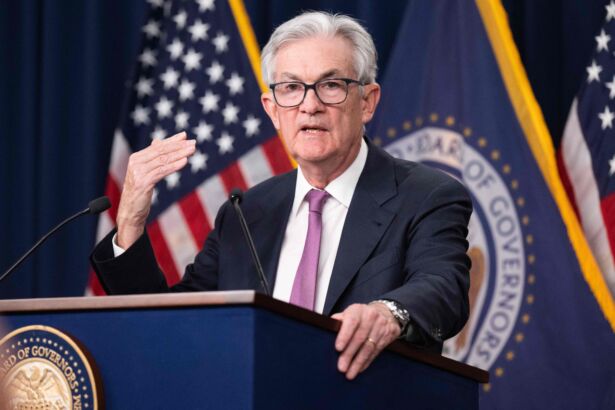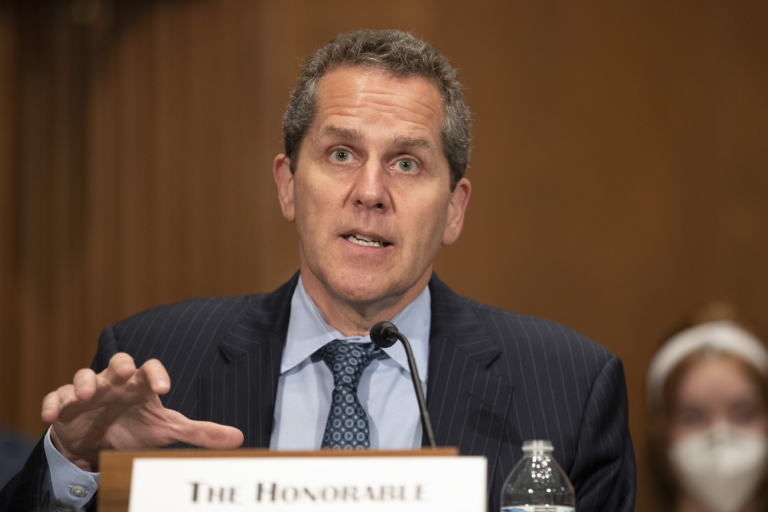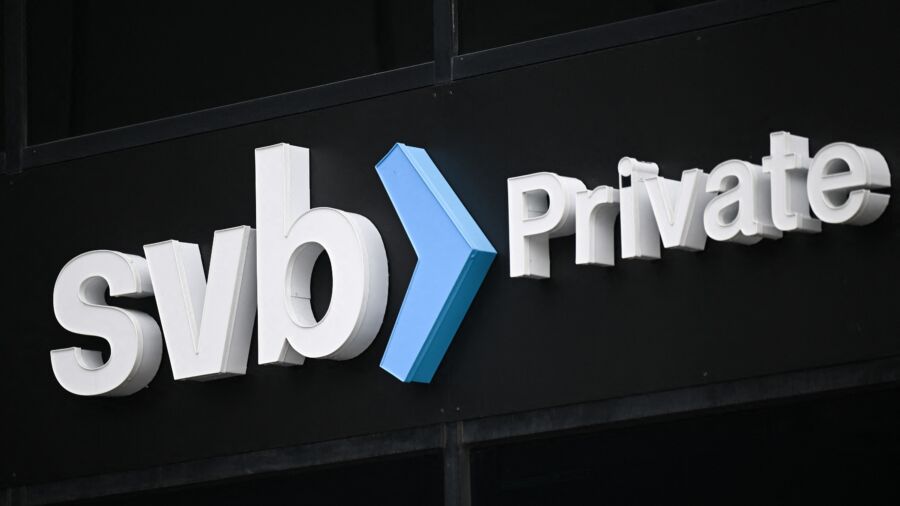The banking crisis that formed from the failures of Silicon Valley Bank (SVB) and Signature Bank was the result of a wide range of factors, including Federal Reserve supervisors who did not do enough to make sure that SVB management fixed the company’s problems, according to a new report from the central bank.
The Fed Board published the much-anticipated review of the banking turmoil that gripped the U.S. financial system in March. The main finding in the review, which was led by Michael S. Barr, vice chair for supervision, was that SVB’s board of directors and management, as well as central bank regulators, failed to address the risks.
At the time of its collapse, SVB had “31 unaddressed safe and soundness supervisory warnings,” which is triple the average number of its industry peers.
The review stated that there were abysmal risk-management practices, weak internal controls, and insufficient liquidity.
Central bank regulators failed to “fully appreciate the extent of the vulnerabilities as Silicon Valley Bank grew in size and compressibility,” according to the report. But when the central bank did identify the vulnerabilities, regulators “did not take sufficient steps to ensure that” SVB remedied these problems at a fast enough pace.
The Fed report also warned that banks with large unrealized losses “face significant safety and soundness risks.”
Barr proposed stronger standards across a broader set of banks.
“Following Silicon Valley Bank’s failure, we must strengthen the Federal Reserve’s supervision and regulation based on what we have learned,” Barr said in the report “This review represents a first step in that process—a self-assessment that takes an unflinching look at the conditions that led to the bank’s failure, including the role of Federal Reserve supervision and regulation.”
Fed chair Jerome Powell welcomed the “thorough and self-critical report,” adding that he agreed “with and support his recommendations to address our rules and supervisory practices, and I am confident they will lead to a stronger and more resilient banking system.”

Social Media ‘Fueled’ the Bank Run
Social media also played a role in the bank run, the review noted.
When SVB witnessed a total deposit outflow of over $40 billion, the bank run was “fueled by social media and SVB’s concentrated network of venture capital investors and technology firms that withdrew their deposits in a coordinated manner with unprecedented speed.”
“The combination of social media, a highly networked and concentrated depositor base, and technology may have fundamentally changed the speed of bank runs,” Barr said in the report. “Social media enabled depositors to instantly spread concerns about a bank run, and technology-enabled immediate withdrawals of funding.”
This conclusion supports a separate working paper co-authored by a group of university professors that stated social media can amplify bank run risks and “influence other outcomes.”
“The amplification of bank run risk via Twitter conversations is a unique opportunity to observe communication and coordination that shapes a critically important economic outcome − distress in banks,” the paper said. “Given the increasingly pervasive nature of social communication on and off Twitter, we do not expect this risk to go away, but rather, it is likely to influence other outcomes, as well.”
‘Textbook Case of Mismanagement’
Barr appeared before two hearings in Congress and posited that SVB’s collapse was a “textbook case of mismanagement.” He also revealed that Fed bank supervisors warned Silicon Valley Bank management as early as the fall of 2021 that risks were forming at the company.
Republicans asserted that the trio of regulators—the central bank, the Federal Deposit Insurance Corp. (FDIC), and the Office of the Comptroller of the Currency—fell asleep at the wheel leading up to the crisis. Barr responded to this charge by confirming that the Fed’s review would assess what happened, what were the driving forces behind the failures, and why management did not remedy these banks’ challenges.

But the White House and left-leaning lawmakers say that a banking law passed under then-president Donald Trump in 2018 contributed to the recent chaos in the financial system. The legislation, which passed in a Republican-controlled Congress with the support of moderate Democrats, raised the threshold for frequent regulatory scrutiny, including stress tests.
However, FDIC vice chairman Travis Hill dismissed this assertion, explaining during an April Bipartisan Policy Center event that the Trump-era bill “had nothing to do with” the latest regional banking debacles.
“We have people searching under the couch cushions, under the carpets, under the mattress, in the storage closet, trying to find something, somewhere to tie the SVB failure to that law and its implementing rules,” he said. “I think it’s quite obvious that S. 2155 had nothing to do with it.”
Carol Roth, a former investment banker and author of “You Will Own Nothing,” has offered a different take, purporting that “it’s the Fed’s actions” that caused the banking meltdown and other economic issues.
“The Fed + govt’s negligent, indulgent monetary + fiscal policy is reckless and has transferred trillions in wealth from Main St. to Wall St.,” she wrote in a tweet on April 27. “The MSM [mainstream media] loves to talk about ‘regulations,’ how about some regulation of the Fed and its abusive powers?”
Federal regulators seized Silicon Valley Bank and Signature Bank in March after clients withdrew tens of billions of dollars in deposits in a short period.
The U.S. government guaranteed all deposits, including uninsured amounts that exceeded the FDIC limit of $250,000. Roughly 90 percent of SVB’s and Signature’s deposits were uninsured.
In the aftermath of the bank failures, there was a sharp drop in overall commercial bank deposits.
Data from the Fed’s H.8 report reveal that deposits have declined by about $422 billion since the week ended March 8, totaling $17.179 trillion. For small institutions, deposits tanked by approximately $228 billion in a two-week span, but they have rebounded since, increasing nearly $50 billion.
The second- and third-largest bank failures in U.S. history cost the FDIC’s deposit insurance fund $22.5 billion, Martin Gruenberg, the head of the FDIC’s board of directors, revealed in a report.
Much of the focus is now on California-based lender First Republic Bank after the company said that customers withdrew $100 billion in deposits in the first quarter.
“With the closure of several banks in March, we experienced unprecedented deposit outflows,” First Republic Bank chief financial officer Neal Holland said in the bank’s earnings report.
The latest price movement in First Republic might signal that “we may well be looking at a third weekend of emergency bank talks and actions,” says top economist Mohamed El-Erian.
First Republic shares have collapsed 95 percent this year, cratering to around $5. The stock was trading at about $150 in April 2022.
From The Epoch Times

